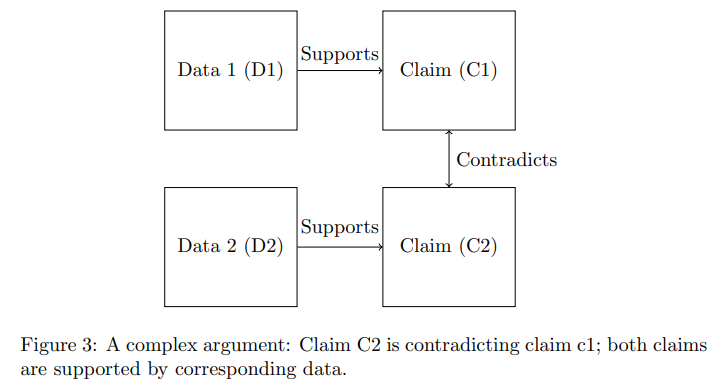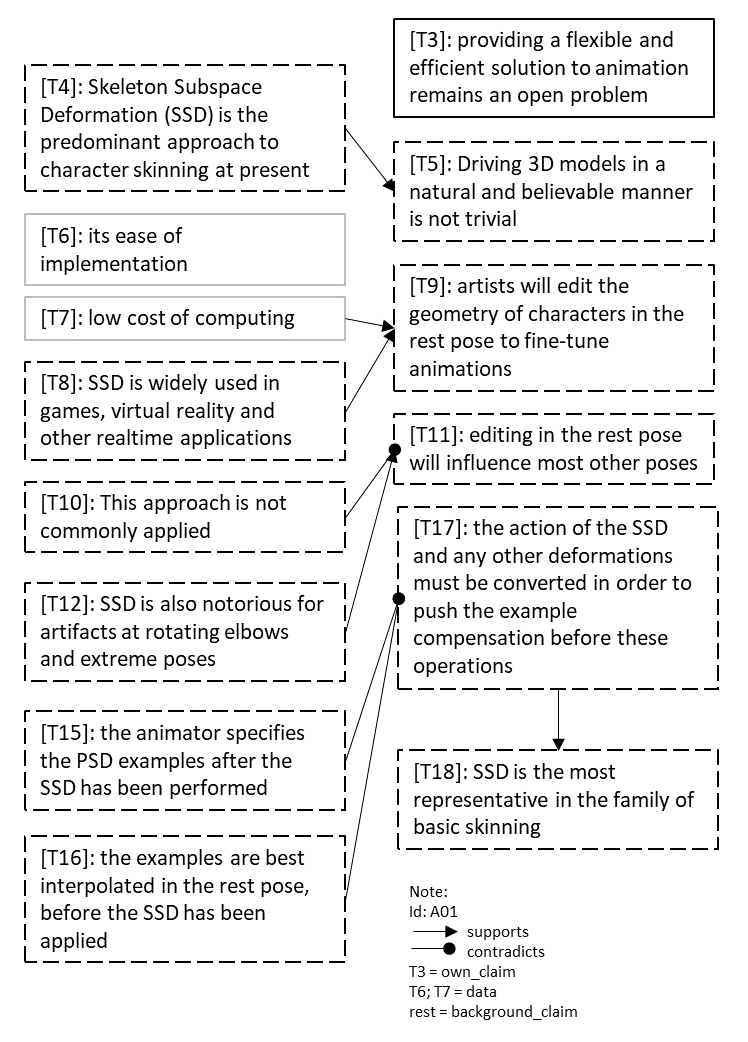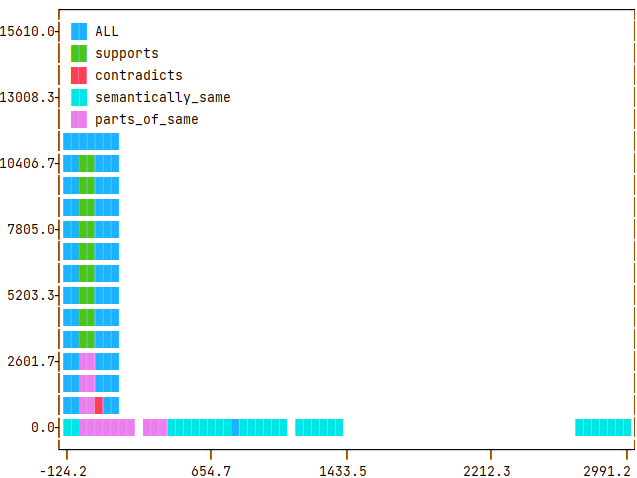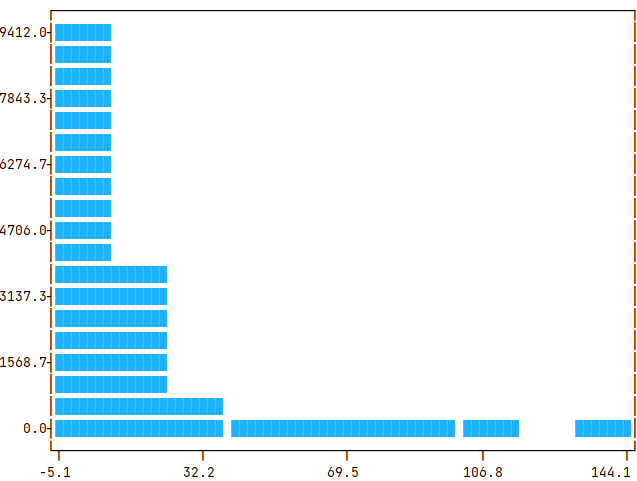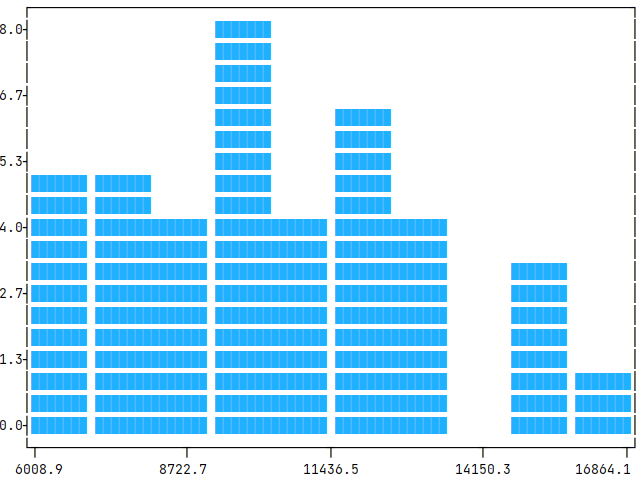The viewer is disabled because this dataset repo requires arbitrary Python code execution. Please consider
removing the
loading script
and relying on
automated data support
(you can use
convert_to_parquet
from the datasets library). If this is not possible, please
open a discussion
for direct help.
PIE Dataset Card for "sciarg"
This is a PyTorch-IE wrapper for the SciArg dataset (paper and data repository). Since the SciArg dataset is published in the BRAT standoff format, this dataset builder is based on the PyTorch-IE brat dataset loading script.
Therefore, the sciarg dataset as described here follows the data structure from the PIE brat dataset card.
Usage
from pie_datasets import load_dataset
from pie_datasets.builders.brat import BratDocumentWithMergedSpans, BratDocument
from pytorch_ie.documents import TextDocumentWithLabeledMultiSpansBinaryRelationsAndLabeledPartitions, TextDocumentWithLabeledSpansBinaryRelationsAndLabeledPartitions
# load default version
dataset = load_dataset("pie/sciarg")
assert isinstance(dataset["train"][0], BratDocumentWithMergedSpans)
# if required, normalize the document type (see section Document Converters below)
dataset_converted = dataset.to_document_type(TextDocumentWithLabeledSpansBinaryRelationsAndLabeledPartitions)
assert isinstance(dataset_converted["train"][0], TextDocumentWithLabeledSpansBinaryRelationsAndLabeledPartitions)
# load version with resolved parts_of_same relations
dataset = load_dataset("pie/sciarg", name='resolve_parts_of_same')
assert isinstance(dataset["train"][0], BratDocument)
# if required, normalize the document type (see section Document Converters below)
dataset_converted = dataset.to_document_type(TextDocumentWithLabeledMultiSpansBinaryRelationsAndLabeledPartitions)
assert isinstance(dataset_converted["train"][0], TextDocumentWithLabeledMultiSpansBinaryRelationsAndLabeledPartitions)
# get first relation in the first document
doc = dataset_converted["train"][0]
print(doc.binary_relations[0])
# BinaryRelation(head=LabeledMultiSpan(slices=((15071, 15076),), label='data', score=1.0), tail=LabeledMultiSpan(slices=((14983, 15062),), label='background_claim', score=1.0), label='supports', score=1.0)
print(doc.binary_relations[0].resolve())
# ('supports', (('data', ('[ 3 ]',)), ('background_claim', ('PSD and improved example-based schemes have been discussed in many publications',))))
Dataset Summary
The SciArg dataset is an extension of the Dr. Inventor corpus (Fisas et al., 2015, 2016) with an annotation layer containing fine-grained argumentative components and relations, believing that argumentation needs to be studied in combination with other rhetorical aspects. It is the first publicly-available argument-annotated corpus of scientific publications (in English), which allows for joint analyses of argumentation and other rhetorical dimensions of scientific writing." (Lauscher et al., 2018, pp. 40-41)
Supported Tasks and Leaderboards
- Tasks: Argumentation Mining, Component Identification, Relation Identification
- Leaderboard: More Information Needed
Languages
The language in the dataset is English (scientific academic publications on computer graphics).
Dataset Variants
The sciarg dataset comes in two versions: default and resolve_parts_of_same.
First, the default version with BratDocumentWithMergedSpans as document type.
In contrast to the base brat dataset, where the document type for the default variant is BratDocument,
the SciArg dataset was published with spans that are just fragmented by whitespace which seems
to be because of the annotation tool used. In the sciarg dataset, we merge these fragments, so that the document type
can be BratDocumentWithMergedSpans (this is easier to handle for most of the task modules).
Fragmented spans, which belong to the same argumentative unit, are marked with parts_of_same relations.
Second, the resolve_parts_of_same version with BratDocument as document type.
In this version, all fragmented spans which were separated by other argumentative or non-argumentative spans and
are connected via the parts_of_same relations are converted to LabeledMultiSpans.
Data Schema
See PIE-Brat Data Schema.
Document Converters
The dataset provides document converters for the following target document types:
pytorch_ie.documents.TextDocumentWithLabeledSpansAndBinaryRelationsLabeledSpans, converted fromBratDocument'sspans- labels:
background_claim,own_claim,data - if
spanscontain whitespace at the beginning and/or the end, the whitespace are trimmed out.
- labels:
BinraryRelations, converted fromBratDocument'srelations- labels:
supports,contradicts,semantically_same,parts_of_same - if the
relationslabel issemantically_sameorparts_of_same, they are merged if they are the same arguments after sorting.
- labels:
pytorch_ie.documents.TextDocumentWithLabeledSpansBinaryRelationsAndLabeledPartitionsLabeledSpans, as aboveBinaryRelations, as aboveLabeledPartitions, partitionedBratDocument'stext, according to the paragraph, using regex.- labels:
title,abstract,H1
- labels:
See here for the document type definitions.
Data Splits
The dataset consists of a single train split that has 40 documents.
For detailed statistics on the corpus, see Lauscher et al. (2018, p. 43), and the author's resource analysis.
Label Descriptions and Statistics
In this section, we report our own corpus' statistics; however, there are currently discrepancies in label counts between our report and:
- previous report in Lauscher et al., 2018, p. 43),
- current report above here (labels counted in
BratDocumentWithMergedSpans's);
possibly since Lauscher et al., 2018 presents the numbers of the real argumentative components, whereas here discontinuous components are still split (marked with the parts_of_same helper relation) and, thus, count per fragment.
Components
default version:
| Components | Count | Percentage |
|---|---|---|
background_claim |
3291 | 24.2 % |
own_claim |
6004 | 44.2 % |
data |
4297 | 31.6 % |
| total | 13592 | 100.0 % |
resolve_parts_of_same version:
| Components | Count | Percentage |
|---|---|---|
background_claim |
2752 | 22.4 % |
own_claim |
5450 | 44.3 % |
data |
4093 | 33.3 % |
| total | 12295 | 100.0 % |
own_claimis an argumentative statement that closely relates to the authors’ own work.background_claiman argumentative statement relating to the background of authors’ work, e.g., about related work or common practices.datacomponent represents a fact that serves as evidence for or against a claim. Note that references or (factual) examples can also serve as data. (Lauscher et al. 2018, p.41; following and simplified Toulmin, 2003)
Relations
default version:
| Relations | Count | Percentage |
|---|---|---|
support: supports |
5789 | 74.0 % |
attack: contradicts |
696 | 8.9 % |
other: semantically_same |
44 | 0.6 % |
other: parts_of_same |
1298 | 16.6 % |
| total | 7827 | 100.0 % |
resolve_parts_of_same version:
| Relations | Count | Percentage |
|---|---|---|
support: supports |
5788 | 88.7 % |
attack: contradicts |
696 | 10.7 % |
other: semantically_same |
44 | 0.7 % |
| total | 6528 | 100.0 % |
Argumentative relations
supports:- if the assumed veracity of b increases with the veracity of a
- "Usually, this relationship exists from data to claim, but in many cases a claim might support another claim. Other combinations are still possible." - (Annotation Guidelines, p. 3)
contradicts:- if the assumed veracity of b decreases with the veracity of a
- It is a bi-directional, i.e., symmetric relationship.
Non-argumentative relations
semantically_same: between two mentions of effectively the same claim or data component. Can be seen as argument coreference, analogous to entity, and event coreference. This relation is considered symmetric (i.e., bidirectional) and non-argumentative. (Lauscher et al. 2018, p.41; following Dung, 1995)parts_of_same(only in thedefaultdataset variant): when a single component is split up in several parts. It is non-argumentative, bidirectional, but also intra-component
(Annotation Guidelines, pp. 4-6)
There are currently discrepancies in label counts between
- previous report in Lauscher et al., 2018, p. 43),
- current report above here (labels counted in
BratDocument's);
possibly since Lauscher et al., 2018 presents the numbers of the real argumentative components, whereas here discontinuous components are still split (marked with the parts_of_same helper relation) and, thus, count per fragment.
Examples
Above: Diagram from Annotation Guildelines (p.6)
Below: Subset of relations in A01
Collected Statistics after Document Conversion
We use the script evaluate_documents.py from PyTorch-IE-Hydra-Template to generate these statistics.
After checking out that code, the statistics and plots can be generated by the command:
python src/evaluate_documents.py dataset=sciarg_base metric=METRIC
From default version:
pie_modules.documents.TextDocumentWithLabeledSpansAndBinaryRelationslabeled_spans:LabeledSpanannotations, converted fromBratDocumentWithMergedSpans'sspans- labels:
background_claim,own_claim,data - if
spanscontain whitespace at the beginning and/or the end, that whitespace is trimmed out.
- labels:
binary_relations:BinaryRelationannotations, converted fromBratDocumentWithMergedSpans'srelations- labels:
supports,contradicts,semantically_same,parts_of_same - if the
relationslabel issemantically_sameorparts_of_same(i.e. it is a symmetric relation), their arguments are sorted by their start and end indices.
- labels:
pie_modules.documents.TextDocumentWithLabeledSpansBinaryRelationsAndLabeledPartitionslabeled_spans, as abovebinary_relations, as abovelabeled_partitions,LabeledSpanannotations, created from splittingBratDocumentWithMergedSpans'stextat new paragraph inxmlformat.- labels:
title,abstract,H1
- labels:
From resolve_parts_of_same version:
pie_modules.documents.TextDocumentWithLabeledMultiSpansAndBinaryRelations:labeled_multi_spans:LabeledMultiSpanannotations, converted fromBratDocument'sspans- labels: as above
- if spans contain whitespace at the beginning and/or the end, that whitespace is trimmed out.
binary_relations:BinaryRelationannotations, converted fromBratDocument'srelations- labels:
supports,contradicts,semantically_same - in contrast to the
defaultversion, spans connected withparts_of_samerelation are stored as one labeled multi-span - if the
relationslabel issemantically_same(i.e. it is a symmetric relation), their arguments are sorted by their start and end indices.
- labels:
pie_modules.documents.TextDocumentWithLabeledMultiSpansBinaryRelationsAndLabeledPartitions:labeled_multi_spans, as abovebinary_relations, as abovelabeled_partitions,LabeledSpanannotations, created from splittingBratDocument'stextat new paragraph inxmlformat.- labels:
title,abstract,H1
- labels:
This also requires to have the following dataset config in configs/dataset/sciarg_base.yaml of this dataset within the repo directory:
_target_: src.utils.execute_pipeline
input:
_target_: pie_datasets.DatasetDict.load_dataset
path: pie/sciarg
revision: 982d5682ba414ee13cf92cb93ec18fc8e78e2b81
For token based metrics, this uses bert-base-uncased from transformer.AutoTokenizer (see AutoTokenizer, and bert-based-uncased to tokenize text in TextDocumentWithLabeledSpansAndBinaryRelations (see document type).
Relation argument (outer) token distance per label
The distance is measured from the first token of the first argumentative unit to the last token of the last unit, a.k.a. outer distance.
We collect the following statistics: number of documents in the split (no. doc), no. of relations (len), mean of token distance (mean), standard deviation of the distance (std), minimum outer distance (min), and maximum outer distance (max). We also present histograms in the collapsible, showing the distribution of these relation distances (x-axis; and unit-counts in y-axis), accordingly.
Command
python src/evaluate_documents.py dataset=sciarg_base metric=relation_argument_token_distances
| len | max | mean | min | std | |
|---|---|---|---|---|---|
| ALL | 15640 | 2864 | 30.524 | 3 | 45.351 |
| contradicts | 1392 | 238 | 32.565 | 6 | 19.771 |
| parts_of_same | 2594 | 374 | 28.18 | 3 | 26.845 |
| semantically_same | 84 | 2864 | 206.333 | 11 | 492.268 |
| supports | 11570 | 407 | 29.527 | 4 | 24.189 |
Span lengths (tokens)
The span length is measured from the first token of the first argumentative unit to the last token of the particular unit.
We collect the following statistics: number of documents in the split (no. doc), no. of spans (len), mean of number of tokens in a span (mean), standard deviation of the number of tokens (std), minimum tokens in a span (min), and maximum tokens in a span (max). We also present histograms in the collapsible, showing the distribution of these token-numbers (x-axis; and unit-counts in y-axis), accordingly.
Command
python src/evaluate_documents.py dataset=sciarg_base metric=span_lengths_tokens
| statistics | train |
|---|---|
| no. doc | 40 |
| len | 13586 |
| mean | 11.677 |
| std | 8.731 |
| min | 1 |
| max | 138 |
Token length (tokens)
The token length is measured from the first token of the document to the last one.
We collect the following statistics: number of documents in the split (no. doc), mean of document token-length (mean), standard deviation of the length (std), minimum number of tokens in a document (min), and maximum number of tokens in a document (max). We also present histograms in the collapsible, showing the distribution of these token lengths (x-axis; and unit-counts in y-axis), accordingly.
Command
python src/evaluate_documents.py dataset=sciarg_base metric=count_text_tokens
| statistics | train |
|---|---|
| no. doc | 40 |
| mean | 10521.1 |
| std | 2472.2 |
| min | 6452 |
| max | 16421 |
Dataset Creation
Curation Rationale
"[C]omputational methods for analyzing scientific writing are becoming paramount...there is no publicly available corpus of scientific publications (in English), annotated with fine-grained argumentative structures. ...[A]rgumentative structure of scientific publications should not be studied in isolation, but rather in relation to other rhetorical aspects, such as the discourse structure. (Lauscher et al. 2018, p. 40)
Source Data
Initial Data Collection and Normalization
"[W]e randomly selected a set of 40 documents, available in PDF format, among a bigger collection provided by experts in the domain, who pre-selected a representative sample of articles in Computer Graphics. Articles were classified into four important subjects in this area: Skinning, Motion Capture, Fluid Simulation and Cloth Simulation. We included in the corpus 10 highly representative articles for each subject." (Fisas et al. 2015, p. 44)
"The Corpus includes 10,789 sentences, with an average of 269.7 sentences per document." (p. 45)
Who are the source language producers?
It can be implied from the data source that the language producers were academics in computer graphics and related fields, possibly assisted by other human editors.
Annotations
Annotation process
"We trained the four annotators in a calibration phase, consisting of five iterations, in each of which all annotators annotated one publication. After each iteration we computed the inter-annotator agreement (IAA), discussed the disagreements, and, if needed, adjourned the annotation guidelines."
The detailed evolution of IAA over the five calibration iterations is depicted in Lauscher et al. (2018), p. 42, Figure 1.
The annotation were done using BRAT Rapid Annotation Tool (Stenetorp et al., 2012).
Who are the annotators?
"We hired one expert (a researcher in computational linguistics) and three non-expert annotators (humanities and social sciences scholars)." (Lauscher et al. 2018, p. 42)
Personal and Sensitive Information
[More Information Needed]
Considerations for Using the Data
Social Impact of Dataset
"To support learning-based models for automated analysis of scientific publications, potentially leading to better understanding of the different rhetorical aspects of scientific language (which we dub scitorics)." (Lauscher et al. 2018, p. 40)
"The resulting corpus... is, to the best of our knowledge, the first argument-annotated corpus of scientific publications in English, enables (1) computational analysis of argumentation in scientific writing and (2) integrated analysis of argumentation and other rhetorical aspects of scientific text." (Lauscher et al. 2018, p. 44)
Discussion of Biases
"...not all claims are supported and secondly, claims can be supported by other claims. There are many more supports than contradicts relations."
"While the background claims and own claims are on average of similar length (85 and 87 characters, respectively), they are much longer than data components (average of 25 characters)."
"[A]nnotators identified an average of 141 connected component per publication...This indicates that either authors write very short argumentative chains or that our annotators had difficulties noticing long-range argumentative dependencies."
(Lauscher et al. 2018, p.43)
Other Known Limitations
"Expectedly, we observe higher agreements with more calibration. The agreement on argumentative relations is 23% lower than on the components, which we think is due to the high ambiguity of argumentation structures."
"Additionally, disagreements in component identification are propagated to relations as well, since the agreement on a relation implies the agreement on annotated components at both ends of the relation."
(Lauscher et al. 2018, p. 43)
Additional Information
Dataset Curators
- Repository: https://github.com/anlausch/ArguminSci
Licensing Information
This research was partly funded by the German Research Foundation (DFG), grant number EC 477/5-1 (LOC-DB).
Citation Information
@inproceedings{lauscher2018b,
title = {An argument-annotated corpus of scientific publications},
booktitle = {Proceedings of the 5th Workshop on Mining Argumentation},
publisher = {Association for Computational Linguistics},
author = {Lauscher, Anne and Glava\v{s}, Goran and Ponzetto, Simone Paolo},
address = {Brussels, Belgium},
year = {2018},
pages = {40–46}
}
@inproceedings{lauscher2018a,
title = {ArguminSci: A Tool for Analyzing Argumentation and Rhetorical Aspects in Scientific Writing},
booktitle = {Proceedings of the 5th Workshop on Mining Argumentation},
publisher = {Association for Computational Linguistics},
author = {Lauscher, Anne and Glava\v{s}, Goran and Eckert, Kai},
address = {Brussels, Belgium},
year = {2018},
pages = {22–28}
}
Contributions
Thanks to @ArneBinder and @idalr for adding this dataset.
- Downloads last month
- 316
